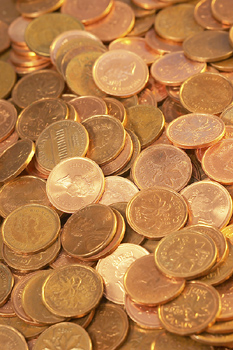Slot Machine Hold Percentages versus Payback Percentages
 The
The
terms hold percentage and payback percentage are different ways of looking
at how much profit a slot machine gives the casino and the player. These are
industry terms used to describe the casino’s edge and the amount a machine
is designed to pay out. All games of chance in a casino give the house some
advantage; that’s how they earn their bread and butter. For games like
roulette and craps, the edge is usually written as a percentage.
Try
the 3D Slot Machine Games at Bovada and Get a $3000 Welcome Bonus
Mathematicians and gambling experts have worked out the house edge for
different casino games based on different sets of rules, so we know that the
average game of blackjack as played in America gives the casino an edge of
between 0.5% and 1% if the gambler follows basic blackjack strategy. Put in
financial terms, for every $100 that player wagers, the casino stands to
make between $0.50 and $1.00. That 0.5%-1% is the blackjack game’s hold
percentage, a theoretical amount of cash a game should bring in over a long
period of time.
The difference between a hold percentage (like the 0.5-1% number for
blackjack) and payback percentage is all about your perspective. Slot
machines are often listed or described by their payback percentage,
especially in slot player magazines and on forums dedicated to slot play.
Payback percentage gives the theoretical percentage of cash that a machine
will pay out compared to what is put in. For example, a slot with a 99.5%
payback percentage would hand out $99.50 in winnings for every $100 put
into, over the long term.
The Hold Percentage
If you’re not the player, but instead a casino manager, you’re more
interested in a slot’s hold percentage, the amount of money the casino can
theoretically anticipate earning from a particular machine over the long
run. Calculating a slot’s hold percentage is easy; just subtract the payout
percentage from 100% and you have the hold percentage. If a slot is designed
with a 95% payback percentage, it offers the casino a 5% hold percentage.
This number is the casino’s edge, just like the 0.5-1% number given earlier
to describe blackjack profits.
The Payout Percentage
It would be nice if every slot machine had its payout percentage listed
on the front – that way gamblers would know how loose or tight a machine is.
Casinos don’t make specific payout percentage details available, for obvious
reasons, and working out a machine’s percentage on your own would take an
extraordinary amount of time and a big financial investment. Even then, the
impact of large jackpots would influence your conception of a machine’s
payback percentage and you wouldn’t get an accurate number.
Even though you can’t find specific payout percentages for slots, casinos
do publish average payouts, usually listed by the denomination of their
machines. A good rule of thumb is that the more active a bank of slot
machines are, the higher the payouts tend to be. Similarly, slots that
accept larger bets tend to have a higher payout percentage than penny or
nickel slots.
While you won’t find specific hold percentage information for a given
slot machine, you can read up on slot machine payouts at online forums and
in magazines that publish this information to get an idea of where to find
generally loose machines. But don’t forget that the purpose of slot play is
entertainment, and if you’re having a good time, who cares what the
machine’s hold percentage is?
